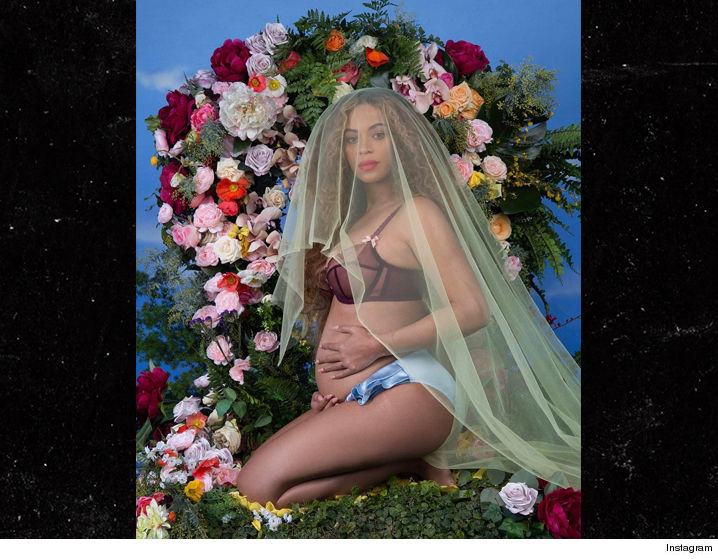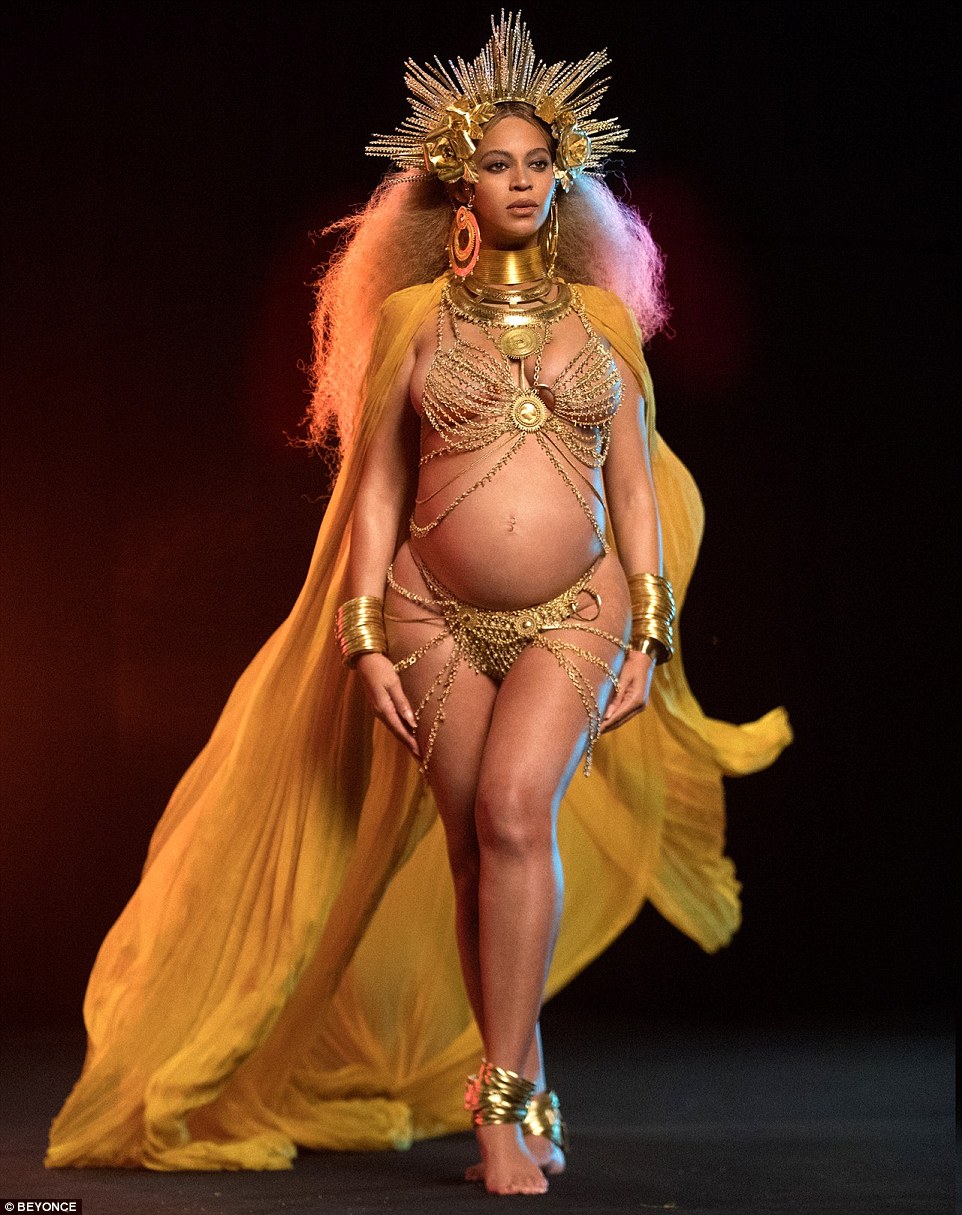Beyoncé, Birth, and African Spirituality in the Public Mind
Portrait of Beyoncé pregnant
Copyright 2017, Awol Erizku. All Rights Reserved.
In early 2017, photos and videos of Beyoncé Knowles splashed across popular magazines and the internet, announcing the American singer’s second pregnancy, a twin pregnancy. Shot by Ethiopian-American photographer, Awol Erizku, the photos depict Beyoncé as what has been interpreted as a Madonna, Venus figure, or goddess [1]. In some, flowers frame her body or rest at her feet and she is seated against a blue sky; while in others she appears reclined or standing with a yellow background, again surrounded by flowers and foliage, a bust of Nefertiti at her side.
Shortly thereafter, the singer performed at the Grammy Awards, appearing as a pregnant goddess in golden attire and crown (image above). Paying tribute to African spirituality, Beyoncé utilized the event to show through her body the imagery of Oshun, an orisha, or deity from the Yoruba religious tradition [2]. After the birth of her babies, additional photos emerged, again shot by Erizku, in which the singer is seen standing and holding her twins. With hair down, leg bent, and a blue veil flowing from her head, Beyoncé stands in front of a large flower arrangement, the sea and blue sky in the background. Like the portraits of her pregnancy, this portrait is reminiscent of both the Virgin Mary and a Botticelli Venus [3].
Beyoncé Knowles, Grammy Awards Performance, February 2017
While glorifying the artist, these photos also act to penetrate the public mind, showcasing pregnancy, birth, and mothering, and presenting these events as sacred. Infused with religious imagery, the photos of Beyoncé tap into the sensibilities of the religious viewer. Yet even the non-religious or secular viewer can understand the religious references of these works and be in awe without religious sentiment at the birth event.
Arisika Razak, a Professor of Philosophy and Religion and Women’s Spirituality at the California Institute of Integral Studies, and a Registered Nurse Midwife, has explored the way that sacred images of African and African-American women, especially have the capacity to empower Black women, allowing them to connect more fully with the world in which they live,
I believe that some African-American women need a Black or African Goddess if they are to find wholeness and meaning at the heart of the world/s in which they live. These images are currently more available to women and men who want them because modern artists, activists, spiritual practitioners and healers have resurrected or re-created African or Afro-centric pantheons which include: traditional African spirits, orishas, and loas; African goddesses and sacred queens; Black Marys and deified Diasporan ancestors, community activists and soul mothers…I explore a few of the images created by traditional and modern African Diasporan artists who seek to transmit positive, life-affirming images of African and African-American women [4].
In her exploration of these images, Razak looks at the way that sexuality and fertility are treated within African cultural history, finding that they are seen as spiritual parts of the human embodied experience of the world in which spirituality and materiality are not viewed as divisible (24). The female body of Africa, explains Razak, was often depicted as sacred and powerful, “Our full figured bodies were honored as embodiments of the awesome energies of fertility, power, nurturance, and change—foundational qualities of the physical and spiritual worlds” (24). She provides numerous examples of this, from the language of the Yoruba people, to the sacred images of historic Sub-Saharan Africa, where fertility and mothering are central themes in understanding a woman’s power within her society and culture.
The United States is a wealthy nation where, nevertheless, infant and maternal death rates remain high, and most new parents receive no paid time off after childbirth and adoption. The medicalization of birth is at an all-time high in the US and worldwide, even though the World Health Organization and other important institutions continue to recommend against it. In the United States, the situation is especially alarming for African American women, who die three times as often as white women during childbirth; as well as for African American infants, who die at a rate more than twice that of white infants.
These images of Beyoncé can bring strength to pregnant women, bringing power to them during pregnancy and helping them to prepare and visualize for labor, birth, and mothering.
[1] Constance Grady, “Decoding the artistic references in Beyoncé’s gorgeous birth announcement for her twins,” Vox, July 14, 2017, accessed July 25, 2017, https://www.vox.com/culture/2017/7/14/15971588/beyonce-twins-birth-announcement-madonna-venus.
[2] Lily Kuo, “At the Grammys, Beyoncé paid an epic tribute to African diaspora spirituality,” Reuters, February 13, 2017, accessed July 25, 2017, https://qz.com/908973/at-the-grammys-beyonce-paid-an-epic-tribute-to-afro-diaspora-spirituality/.
[3] Grady, “Decoding.”
[4] Arisika Razak, “Sacred Images of African and African-American Women” in She is Everywhere! An Anthology of Writing in Womanist/Feminist Spirituality, Vol. 2, edited by Annette Lyn Williams, Karen Nelson Villanueva, and Lucia Chiavola Birnbaum, Bloomington, Indiana: iUniverse, 2008, 21-39, 23.

